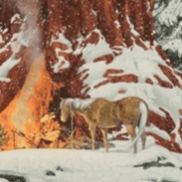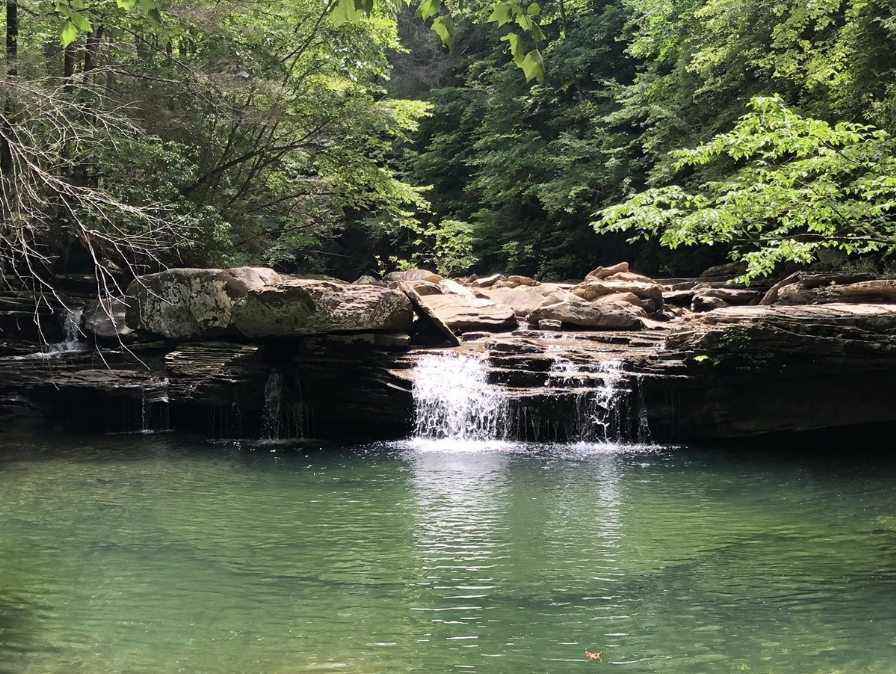-
Posts
5,642 -
Joined
-
Last visited
Content Type
Profiles
Blogs
Forums
American Weather
Media Demo
Store
Gallery
Everything posted by Holston_River_Rambler
-

Winter 23-24' Wx Observations Thread
Holston_River_Rambler replied to Carvers Gap's topic in Tennessee Valley
Radarscope shows snow north of Jackson. Temps look to be between 34 and 32 to about I 40. We need @Itryatgolf70s observations in these pivotal hours. -

February 2024 mid/ long range
Holston_River_Rambler replied to Holston_River_Rambler's topic in Tennessee Valley
12z Euro drops some more snow with a front on Feb 17.- 750 replies
-
- 3
-

-
- snow elk
- wooly worm
-
(and 1 more)
Tagged with:
-

February 2024 mid/ long range
Holston_River_Rambler replied to Holston_River_Rambler's topic in Tennessee Valley
Winter. Weather. Advisories. Middle TN.- 750 replies
-
- 6
-

-

-
- snow elk
- wooly worm
-
(and 1 more)
Tagged with:
-

February 2024 mid/ long range
Holston_River_Rambler replied to Holston_River_Rambler's topic in Tennessee Valley
Saw that one back on August 20th, a full month before the black one reared its head.- 750 replies
-
- 2
-

-
- snow elk
- wooly worm
-
(and 1 more)
Tagged with:
-

February 2024 mid/ long range
Holston_River_Rambler replied to Holston_River_Rambler's topic in Tennessee Valley
- 750 replies
-
- 5
-

-

-
- snow elk
- wooly worm
-
(and 1 more)
Tagged with:
-

February 2024 mid/ long range
Holston_River_Rambler replied to Holston_River_Rambler's topic in Tennessee Valley
I heard something about later in the year. Maybe after September- 750 replies
-
- 1
-

-
- snow elk
- wooly worm
-
(and 1 more)
Tagged with:
-

February 2024 mid/ long range
Holston_River_Rambler replied to Holston_River_Rambler's topic in Tennessee Valley
They are doing away with the high res OP Euro and running the EPS and the control as sort of a lo res OP.- 750 replies
-
- snow elk
- wooly worm
-
(and 1 more)
Tagged with:
-

February 2024 mid/ long range
Holston_River_Rambler replied to Holston_River_Rambler's topic in Tennessee Valley
- 750 replies
-
- 4
-

-
- snow elk
- wooly worm
-
(and 1 more)
Tagged with:
-

February 2024 mid/ long range
Holston_River_Rambler replied to Holston_River_Rambler's topic in Tennessee Valley
West TN just got NAM’d- 750 replies
-
- 1
-

-
- snow elk
- wooly worm
-
(and 1 more)
Tagged with:
-

February 2024 mid/ long range
Holston_River_Rambler replied to Holston_River_Rambler's topic in Tennessee Valley
No worries @jaxjagman or @Daniel Boone I was trying to ride a line between serious and funny.- 750 replies
-
- 2
-

-
- snow elk
- wooly worm
-
(and 1 more)
Tagged with:
-

February 2024 mid/ long range
Holston_River_Rambler replied to Holston_River_Rambler's topic in Tennessee Valley
I've got the H5 gifs from the January system. It looks to me like the EPO knocked the cold our way and then the NAO modulated the TPV in central Canada in just such a way so that the moisture aimed at the the TN Valley. I don't have the H5 gifs for afterwards though. Alphabet soup indices incoming: I hate to break solidarity with the TRI folks, but I am more of an EPO/ PNA person. This is not an attack on y'all. I love you and want you to live! But y'all can do better with a -NAO that the rest of the TN Valley. If we hadn't had the EPO dislodge the cold and the PNA spike, the TPV that drove the flow beneath it and aimed the moisture at us, might have been pushed by the NAO back to Seattle. (-PDO FTW then?) -NAO 100% helped in that situation, but there was an arm of the TPV acting as a 50/50. I've decided it is not the NAO I want for storms here, it is a semi permanent 50/50 low. You know how the troughs seem to magically try to always drop into the Southwest these days, I want a trough to be like that in the 50/50 spot. You don't have to worry about the NAO then. There will automatically be higher heights over the Davis Straits and Greenland in response to the 50/50. Kind of like Jax's pic above. I guess we have to wait until the AMO flips, or as the Capital Weather Gang alleged a few days ago, the Atlantic Meridional Overturning (another AMO) dies and the Atlantic dramatically cools. Honestly I think the January storm was a very rare set up in terms of the Continental synoptics. I don't think 8-10 inches of snow is as rare as some of the news folks who were saying this was our biggest snow since '93., but the TPV being in just the right place at just the right time and to have the NINO STJ there too was unique. It really was like a colder, drier version of my rainy "firehose" pattern, like we saw yesterday in some parts of the state. Lord have mercy, how I would love to see the .qpf we had yesterday and overnight as snow! Flooding gifs. Discussion of the MJO and SSWs. EPO vs. NAO. It must be February in the TN Valley! We need the guidance of the elk more than ever in these godless, commercial times. @Greyhoundhave you taken the abomination down yet? It may wish to be removed. Not blaming you or anything, but creepy metal snowmen can be fickle. Glad to see the 6z GFS showing more cold in the long range. Even got some TN Valley snow under 200 hours! OP Euro still bringing some cold on the 0z run too. This latest SSW looking less impressive to me lately, but I think we will see some atmospheric fallout around mid March. Welp, I'm off to float down the road in my raft. Will post pics if I survive or catch any food to feed the neighborhood.- 750 replies
-
- 5
-

-

-

-
- snow elk
- wooly worm
-
(and 1 more)
Tagged with:
-

February 2024 mid/ long range
Holston_River_Rambler replied to Holston_River_Rambler's topic in Tennessee Valley
I'm probably gonna A) be wrong and B ) get a comment about slinging spaghetti on a wall but I think we are about 7 - 10 days away from seeing a meaningful end to this cluster of a pattern we've been in. I was really hoping about this time last week we'd see some better signs by yesterday or today and yeah the Euro above is nice, but I'd like to see all ops at least showing a way out. Doesn't have to be an epic look. Doesn't mean it has to show snow. All I'm asking is for two weeks without a trough slamming into California. Hopefully the Euro is the first hint of changes brewing. That satellite imagery Jeff posted yesterday is not too encouraging, but if we can believe the GEFS RMM today (updated late) the mean splits the difference of 30 members between several big phase 8-1-2, several CODs, and several, I guess, status quos: I especially like the one member that goes back to phase six and stays there for a week. GFS OP likes the COD. I still think it lo amp/ borderline traverses COD 8-1-2-3. If it plays out like it did in January, our best chance for a January redo may be around the Raindancewx date of March 1.- 750 replies
-
- 5
-

-
- snow elk
- wooly worm
-
(and 1 more)
Tagged with:
-

February 2024 mid/ long range
Holston_River_Rambler replied to Holston_River_Rambler's topic in Tennessee Valley
I have to think precip. won't be a problem and bowling ball lows in a few weeks. Even though the Maritime continent shallow ocean heat is still intense, the past few weeks have seen the biggest winter time SOI drops since I've been posting. The end of that Euro run was nice, if you like cold. Looked like shortwaves getting slung its way too.- 750 replies
-
- 1
-

-
- snow elk
- wooly worm
-
(and 1 more)
Tagged with:
-

February 2024 mid/ long range
Holston_River_Rambler replied to Holston_River_Rambler's topic in Tennessee Valley
I think we've been fighting that since I've been typing on this site, lol.- 750 replies
-
- snow elk
- wooly worm
-
(and 1 more)
Tagged with:
-

Winter 23-24' Wx Observations Thread
Holston_River_Rambler replied to Carvers Gap's topic in Tennessee Valley
-

February 2024 mid/ long range
Holston_River_Rambler replied to Holston_River_Rambler's topic in Tennessee Valley
Looks like it also snows/ wintery mixes in CAD regions of NC for something like 36+ hours- 750 replies
-
- 1
-

-
- snow elk
- wooly worm
-
(and 1 more)
Tagged with:
-

February 2024 mid/ long range
Holston_River_Rambler replied to Holston_River_Rambler's topic in Tennessee Valley
Euro is at least looking like it wants to drop a hunk of frigid air south after about 190 hours.- 750 replies
-
- 1
-

-
- snow elk
- wooly worm
-
(and 1 more)
Tagged with:
-

February 2024 mid/ long range
Holston_River_Rambler replied to Holston_River_Rambler's topic in Tennessee Valley
I think it just depends on where you are. I could def. see SE TN dodging the higher totals. You get moreSE ridge and I get the firehose.- 750 replies
-
- 2
-

-
- snow elk
- wooly worm
-
(and 1 more)
Tagged with:
-

February 2024 mid/ long range
Holston_River_Rambler replied to Holston_River_Rambler's topic in Tennessee Valley
Look at this beautiful microwave precipitable water imagery: Double tap action engage! Eastern and Central Pac precip train! The Pacific is lining em up- 750 replies
-
- 4
-

-

-
- snow elk
- wooly worm
-
(and 1 more)
Tagged with:
-

February 2024 mid/ long range
Holston_River_Rambler replied to Holston_River_Rambler's topic in Tennessee Valley
seriously though:- 750 replies
-
- 9
-

-

-
- snow elk
- wooly worm
-
(and 1 more)
Tagged with:
-

Winter 23-24' Wx Observations Thread
Holston_River_Rambler replied to Carvers Gap's topic in Tennessee Valley
Got the lightning here now, too. -

Winter 23-24' Wx Observations Thread
Holston_River_Rambler replied to Carvers Gap's topic in Tennessee Valley
Saw two trees budding out today in Ridgefields area of Kingsport. One almost at the point Bays Mt and the Holston River meet. -

February 2024 mid/ long range
Holston_River_Rambler replied to Holston_River_Rambler's topic in Tennessee Valley
12z GFS at hour 190ish looks beautiful. I’ll take that look even if it ends suppressed later in this run.- 750 replies
-
- 1
-

-
- snow elk
- wooly worm
-
(and 1 more)
Tagged with:
-

February 2024 mid/ long range
Holston_River_Rambler replied to Holston_River_Rambler's topic in Tennessee Valley
We had one single variable we could control—the elk. But some godless blaspheming heatherns in Coalfied ran it off.- 750 replies
-
- 2
-

-

-
- snow elk
- wooly worm
-
(and 1 more)
Tagged with:
-

February 2024 mid/ long range
Holston_River_Rambler replied to Holston_River_Rambler's topic in Tennessee Valley
@John1122 whatchya got for March 20 - 25 1998?- 750 replies
-
- snow elk
- wooly worm
-
(and 1 more)
Tagged with:

